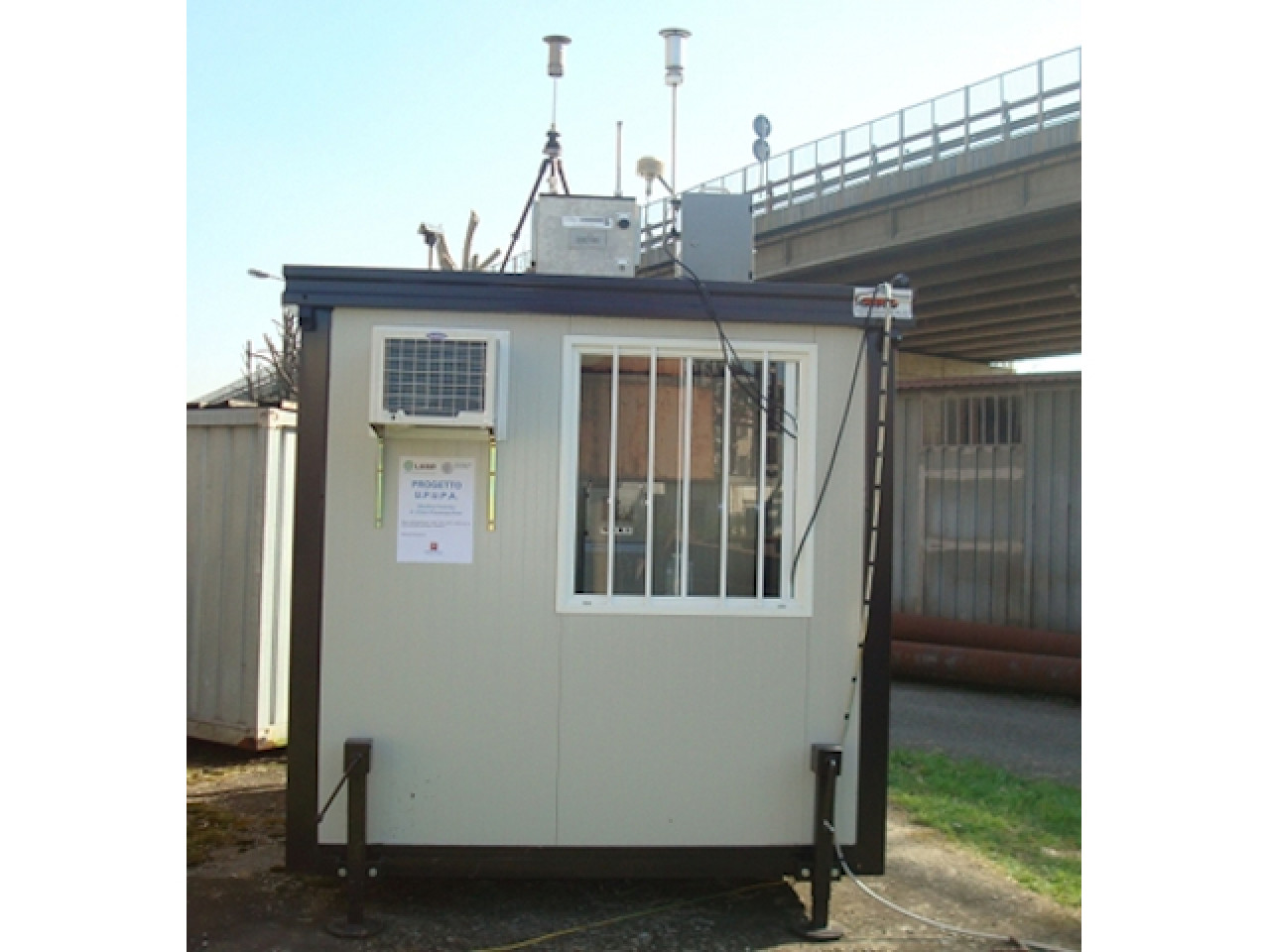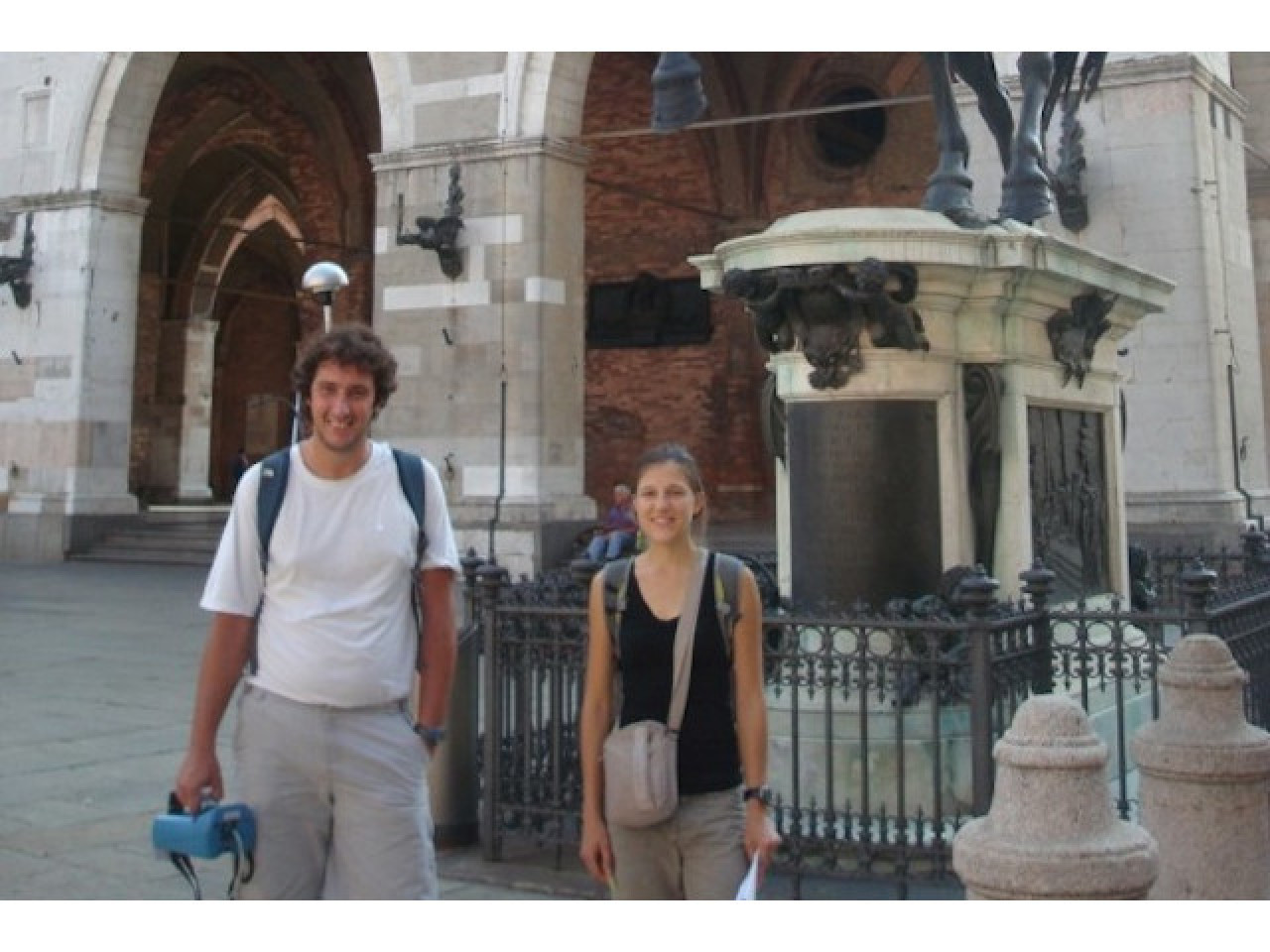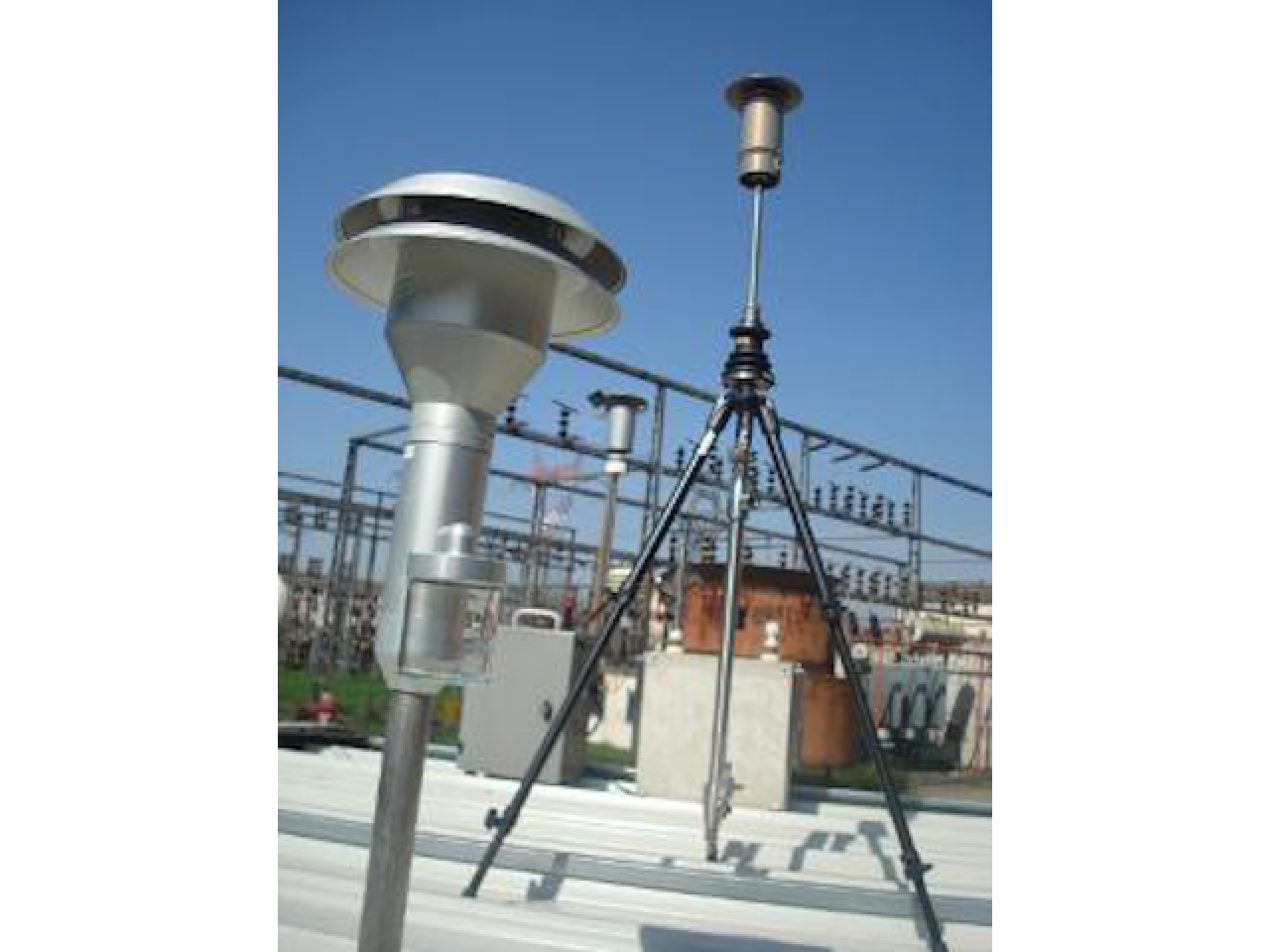Due to the proximity to emissions from vehicular traffic, recognised as the main source of fine and ultra-fine particulate in urban areas, individuals moving on foot or with other means of transport in a town are potentially exposed to high concentrations of ultra-fine particulate (UF, diameter<0.1 micron) and nano-particulate (NP, diameter<0.05 micron). The monitoring provides detailed data on human exposure to these components of the atmospheric particulate. The peculiar aspect stems from the consideration that monitoring networks, and in general fixed stations, very often do not represent the actual exposure conditions of residents. To deepen this aspect, an innovative personal portable sampling system has been outfitted, which has allowed typical urban routes to be monitored (pedestrian paths, bicycle paths, travelers with or without vehicles and at different times of the day) in connection to conventional pollutants and ultra-fine particulate.
 Monitoring booth used for the UPUPA Project (Air quality monitoring in urban areas in Piacenza)
Monitoring booth used for the UPUPA Project (Air quality monitoring in urban areas in Piacenza)
The laboratory is among the first in Italy on the issue of nano-dusts in urban areas. The peculiar aspect stems from the consideration that monitoring networks, and in general fixed stations, very often do not represent the actual exposure conditions of residents. To integrate this aspect, an innovative personal portable sampling system has been outfitted, which has allowed typical urban routes to be monitored (pedestrian paths, bicycle paths, travelling with motorbikes or cars and at different times of the day) in connection to conventional pollutants and ultra-fine particulate.
Air quality monitoring in urban areas. An experimental research of this kind is a powerful tool for knowledge of air quality, based on sound science, for the benefit of policy makers at local, regional and national levels. It also provides a service to the citizens residing in the area of the survey, as it informs them on the real exposure of an individual to particulate fractions potentially more harmful to the human body.
 Mobile measurement of nano-dusts made with portable instrumentation
Mobile measurement of nano-dusts made with portable instrumentation
Monitoring ultra and nano-dusts in the city of Piacenza
The project aimed at monitoring ultrafine particulate and nano-particulate in various areas of the Piacenza province. Conventional particulate measurements (PM10 and PM2.5) do not provide information on these parameters, despite the UF and NP components seem to have a significant impact on the health of exposed individuals. This aspect has been investigated by monitoring characteristic routes of the Piacenza urban area (pedestrian, bicycle paths, with private and public vehicles) with portable instrumentation to measure the UF and NP components of the particulate. After identifying the sampling sites, the measurement surveys of nano-dusts are planned with fixed instrumentation. After that, exposure paths are defined, to be monitored with the portable instrumentation. After gathering the data, an analysis of the interconnections between emissive presence and type of sampling sites, is able to provide information on the role of emissive sources and possible actions to be implemented. The research has highlighted higher concentration levels in the winter season and in the Piacenza urban area, but also high spatial variability of emissive levels by type of journey. A significant data base was produced for future epidemiological investigations.
Fondazione di Piacenza e Vigevano Politecnico di Milano Regione Emilia-Romagna ARPA Emilia-Romagna SIET
G. Ripamonti, S. Signorini, G. Lonati, S. Ozgen, S. Cernuschi. M. Giugliano. Particle number concentration exposure in different urban transport modes. Minutes of the SIDISA 2012 conference; p.212. G. Lonati, G. Ripamonti, S. Ozgen. Particle number concentration and size distribution in the urban area of Milano and Piacenza, Italy. Minutes of the SIDISA 2012 conference; p.213.
 Detail of the LEAP instrumentation to measure nano-dusts
Detail of the LEAP instrumentation to measure nano-dusts

